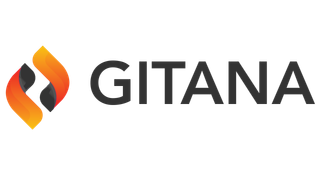Found 231 results for "find"
The search executed in 0.001 seconds. That's fast.

|
Gitana 3.2 / Guide / Guide / FindDocumentation Reference Discover and retrieve content effortlessly with Cloud CMS's Find Service, utilizing Query, Search, and Traversal. (Gitana 3.2)
Score: 75.3451
|

|
Gitana 3.2 / Guide / Guide / SearchDocumentation Reference Optimize your content search with Cloud CMS's powerful ElasticSearch and MongoDB features for accurate, efficient results. (Gitana 3.2)
Score: 43.9554
|

|
Gitana 4.0 / Content Engine / SearchDocumentation Reference Optimize content discovery with Cloud CMS, leveraging full-text search via ElasticSearch and MongoDB. (Gitana 4.0)
Score: 43.9554
|

|
Gitana 4.0 / Content Engine / Search / ExamplesDocumentation Reference Optimize your Cloud CMS search with integrated ElasticSearch for powerful queries and precise results. (Gitana 4.0)
Score: 43.2472
|

|
Gitana 4.0 / Content Engine / FindDocumentation Reference Discover content effortlessly with Cloud CMS Find Service. Integrate query, search, and traversal in one seamless API. (Gitana 4.0)
Score: 37.69
|

|
Gitana 4.0 / Content Engine / Search / Query String ReferenceDocumentation Reference Enhance your ElasticSearch skills with comprehensive query string guide—case insensitivity, full-text, exact match, and more. (Gitana 4.0)
Score: 33.4064
|

|
How to find the Repository ID for a Project?Support Article Learn how to easily find your project's repository ID using simple steps and URL tricks in our detailed guide. (Support 1.0)
Score: 17.3898
|

|
Gitana 3.2 / Guide / Guide / Search / ExamplesDocumentation Reference Discover how Cloud CMS integrates with ElasticSearch, enabling powerful queries with the ElasticSearch DSL for seamless content searches. (Gitana 3.2)
Score: 16.3829
|

|
Gitana 3.2 / Guide / Guide / Search / Query String ReferenceDocumentation Reference Discover how Cloud CMS utilizes ElasticSearch for efficient full-text search & case-insensitive query string operations. Explore wildcards, fuzzy searching, and more. (Gitana 3.2)
Score: 13.751
|

|
How to Retrieve content by their document library pathSupport Article Learn to retrieve content using the CMS Node API by document library path with examples and advanced queries. (Support 1.0)
Score: 4.8094
|

|
Gitana 3.2 / Guide / Guide / Integrations / KalturaDocumentation Reference Integrate Kaltura with Cloud CMS for seamless video management, creation, and collaboration on mobile and web. (Gitana 3.2)
Score: 4.7023
|

|
Gitana 4.0 / Content Engine / Integrations / KalturaDocumentation Reference Integrate Kaltura with Cloud CMS for seamless video management and content linking on web and mobile platforms. (Gitana 4.0)
Score: 4.7023
|

|
Gitana 3.2 / Guide / Guide / TraversalDocumentation Reference Discover node relationships with Cloud CMS's traversal API, transforming its content graph complexity into a comprehensible structure. (Gitana 3.2)
Score: 4.6911
|

|
Gitana 4.0 / Content Engine / TraversalDocumentation Reference Explore Cloud CMS's traversal feature to navigate graph structures, optimizing content queries with nodes and associations. (Gitana 4.0)
Score: 4.6911
|

|
Gitana 4.0 / Developers / Drivers / PHPDocumentation Reference Connect your PHP apps to Gitana with a robust API driver offering OAuth, HTTPS, and more. Free and open-source. (Gitana 4.0)
Score: 4.5532
|

|
Gitana 4.0 / Developers / Drivers / PythonDocumentation Reference Connect Python apps to Gitana effortlessly; supports Flask, Django, CRUD operations, and more. (Gitana 4.0)
Score: 4.5532
|

|
Gitana 4.0 / Developers / Drivers / GoDocumentation Reference Connect your Go app to Gitana effortlessly with our Go driver. Current version: v0.1.3. (Gitana 4.0)
Score: 4.4843
|

|
Using swimlanes in workflowSupport Article Optimize workflow management with swimlanes for seamless task distribution among users or teams in your organization. (Support 1.0)
Score: 4.4174
|

|
Gitana 3.2 / Guide / Guide / Cookbooks / Go CookbookDocumentation Reference Optimize Go development with guides on setup, Cloud CMS connection, and querying using the Go driver. (Gitana 3.2)
Score: 4.3484
|

|
Gitana 4.0 / Developers / Cookbooks / Go CookbookDocumentation Reference Explore the Go Cookbook for connecting with Gitana using the Go driver. Access resources, code samples, and setup instructions. (Gitana 4.0)
Score: 4.3484
|

|
Directed and Undirected AssociationsSupport Article Explore directed and undirected associations in Cloud CMS API, enhancing node relationships in powerful, flexible ways. (Support 1.0)
Score: 4.2935
|

|
Gitana 3.2 / Guide / Guide / Cookbooks / REST API CookbookDocumentation Reference Unlock the full potential of Cloud CMS with our REST API Cookbook. Learn OAuth2 authentication, node creation, and advanced queries. (Gitana 3.2)
Score: 4.2856
|

|
Gitana 4.0 / Developers / Cookbooks / REST API CookbookDocumentation Reference Learn how to integrate with Gitana via REST API, using OAuth2 authentication, queries, and node associations. (Gitana 4.0)
Score: 4.2856
|

|
Gitana 4.0 / Developers / Drivers / C#Documentation Reference Connect .NET apps to Gitana effortlessly with the C# driver for robust functionality and easy API integration. (Gitana 4.0)
Score: 4.2283
|

|
Gitana 3.2 / Guide / Guide / API / Data Types / NodeDocumentation Reference Comprehensive guide to creating, reading, updating, and deleting nodes in Cloud CMS with examples. (Gitana 3.2)
Score: 4.2132
|
